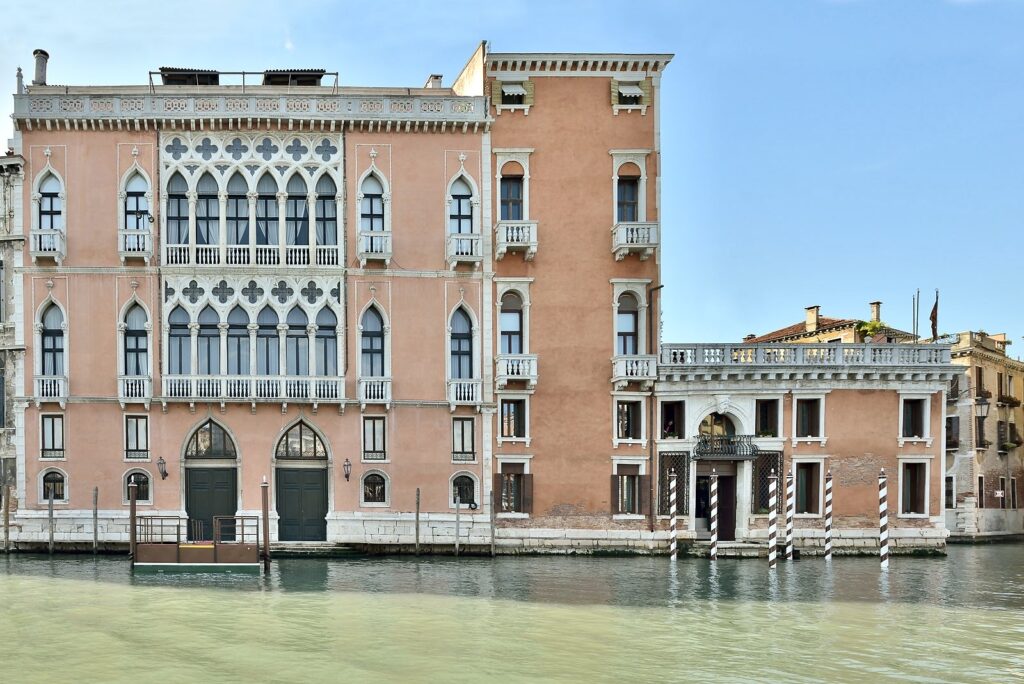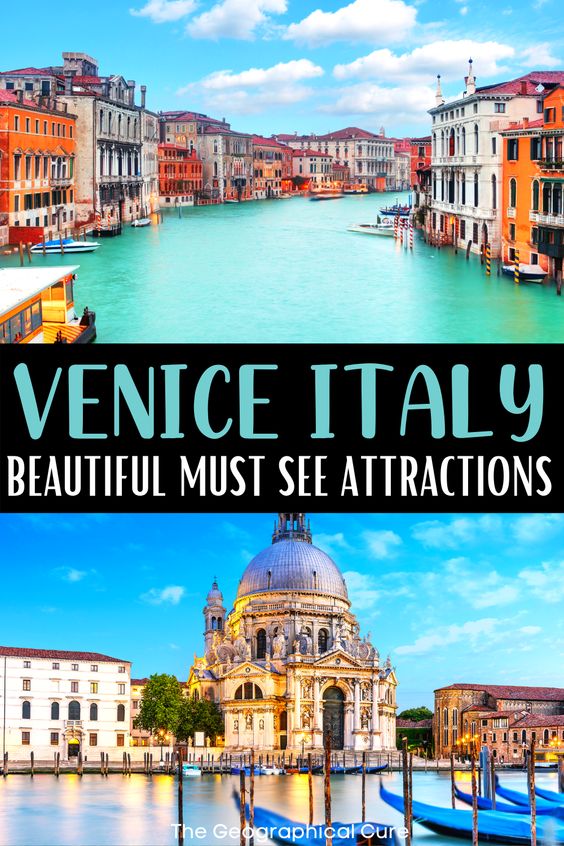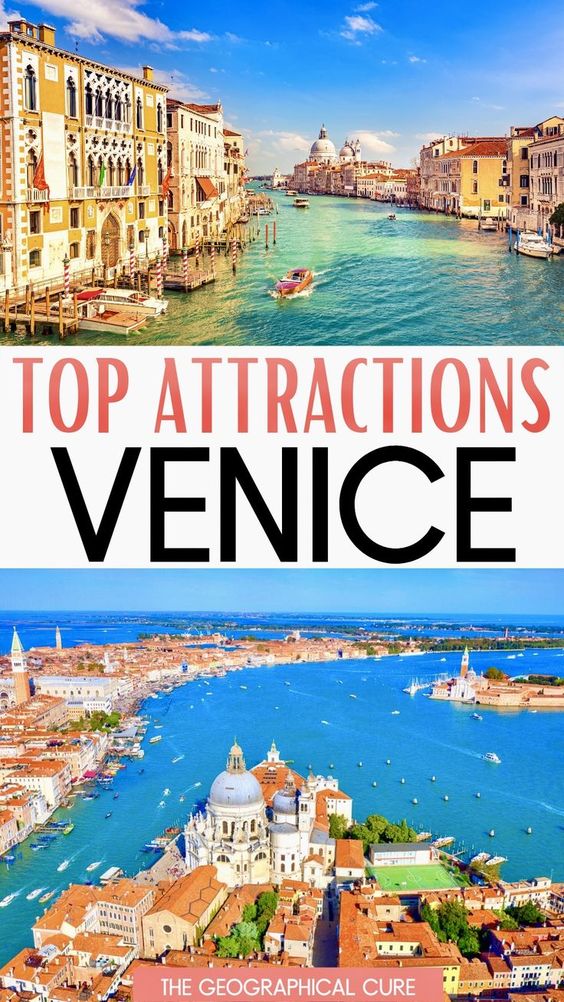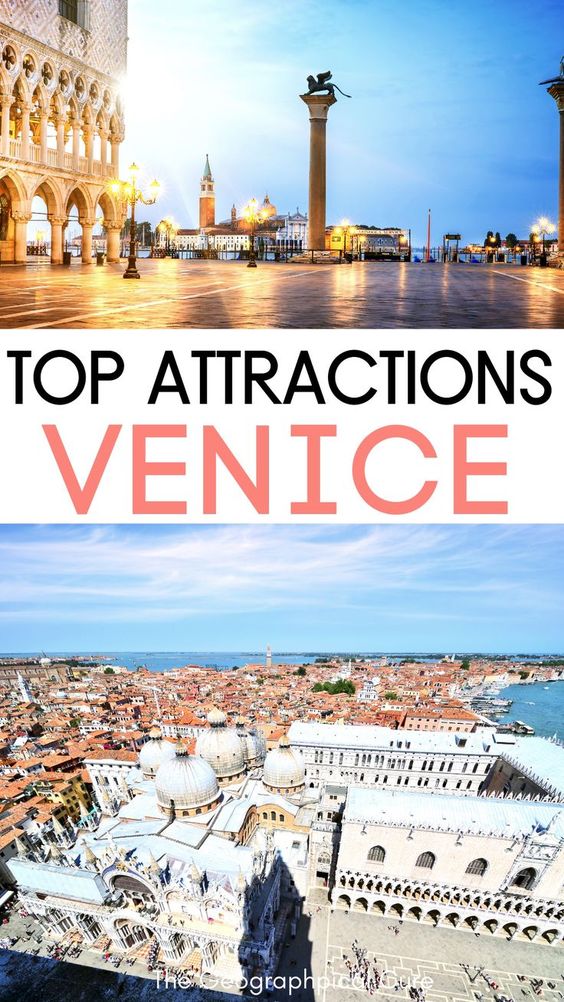If you’re looking for a classic and unmissable thing to do in Venice, cruising down the Grand Canal is a must. As you sail along the canal, you’ll be able to appreciate the city’s unique urbanism and see some of its top attractions.
Venice is a truly unique city, one of the world’s most beautiful and captivating. It’s like a natural movie set, and no other place looks quite like it. Venice is built on water, which is something that shouldn’t exist in real life.
Cruising down the Grand Canal is the best way to see the city’s breathtaking sights. The canal is lined with historic buildings, including dreamy palazzos and churches, many of which date back centuries.
You can also see some of Venice’s iconic bridges, such as the Rialto Bridge and the Accademia Bridge.
Overview of the Grand Canal
The Grand Canal has a reverse S shape. The Grand Canal is 2.4 miles long, and varies in width. The widest point is almost 300 feet across.
The Grand Canal isn’t man made. It follows the path of an ancient river bed underneath.
During Venice’s heyday, the Grand Canal was used by traders, making their way to the Rialto Bridge. Today, it’s flanked with over 170 buildings, including pastel mansions and gleaming Byzantine palazzi.
READ: The History of Venice in a Nutshell
The most important buildings on the Grand Canal were residences of Venice’s powerful patrician families. Because of these sumptuous palaces, the Grand Canal has been described “as the most beautiful street in the world.”
The Grand Canal makes getting around Venice a bit of a hassle. Only four bridges cross it.
The trick to get across is to take a traghetto for two euros. A traghetto is an oversized gondola. (No one would know you weren’t on a gondola, so snap a pic.)
You can also ride the entire length of the Gran Canal on a vaporetto, Venice’s water bus. (I’ll give you tips on how to take it below.)
Riding the Vaporetto is an excellent way to cruise the Grand Canal, and it’s much cheaper than hiring a private water taxi. You can buy a ticket at any Vaporetto stop.
Boats run regularly throughout the day. Not only is it an efficient mode of transportation, but it also offers incredible views of the city from the water
20 Top Attractions On the Grand Canal in Venice
Here are the must see and best things to do along the Grand Canal in Venice. If you plan to visit most of these attractions, you should book the Venice City Pass.
1. St. Mark’s Basilica
St. Mark’s Basilica is an astonishing tour de force of Italo-Byzantine architecture. Consecrated in 1093, it’s one of the world’s most famous churches. Since 1807, St. Mark’s has been the cathedral of Venice.
The basilica was primarily built to house the relics of the evangelist St. Mark. It also served as the private chapel of the doge, the constitutional monarch at the head of the Republic of Venice.
The church has a unique and eclectic mix of styles and materials. Venice imported the art and architectural style from the Byzantine world. Just as Venice is like no other city in the world, St. Mark’s is like no other church in Europe.
The primary building material was brick, like everything else in Venice. Brick was the lightest building material available at the time. Once the structure went up, it was covered by marble slabs and relief sculptures to make it as decorative as possible.
The church’s footprint is a Greek cross plan, with a giant dome above the crossing point. Each of the four arms is surmounted with a dome. The altar is located at the end of the eastern arm.
Inside, is a golden extravaganza of mosaics, 90,000 square feet in total symbolically concentrated high above in the celestial world. In the middle ages, Venice was the leading school of mosaic in, ahead of Ravenna. The oldest mosaics in St. Mark’s date back to 1070, telling Old Testament stories.
The basilica’s uneven floor is decorated as well. It’s uneven because of high water flooding.
There are two pulpits connected by a rare surviving rood screen, separating the clergy and the laity. The baldachin, or architectural shelter, marks the spot where the body of St. Mark rests in the crypt below.
READ: Guide To the Mosaics of Ravenna
It’s worth it to cough up the cash for the Pala d’Oro, an elaborate Gothic altar panel on a pivot behind the baldachin. It’s made of gold and decorated with 2,000 precious gems, enamels, and ivories. The panel is universally considered the most refined expression of Byzantine art.
Also head upstairs to the Loggia dei Cavalli, or Balcony of the Horses. This is where you’ll find the Triumphal Quadriga — the four beautiful bronze horses of St. Mark.
Copies are on an observation balcony, which gives you stunning views over Venice. Dating from the 4th century B.C., the precious originals (once plated in gold) are in the Marciano Museum.
You’ll definitely want to pre-book a skip the line ticket. You may also want to book a guided tour with terrace access. You can also book a ticket to climb the campanile, the bell tower of the basilica for views.
READ: 2 Day itinerary for Venice
2. Doge’s Palace
The Doge’s Palace or Palazzo Ducale, is one of Venice’s most iconic landmarks and the next top attraction on the Gran Canal. Set in St. Mark’s Square, the palace is the very symbol of Venice.
This pink and white marble Gothic-Renaissance building was the official residence of the doges, rulers of Venice for more than 1,000 years. After a fire in 1677, it was largely rebuilt.
Inside the grand interior are some fabulous pieces of Renaissance and Venetian art. The must see masterpieces are Veronese’s Rape of Europa and The Triumph of Venice, paintings and ceilings by Tintoretto and Veronese, and Tiepolo’s Neptune Bestowing Gifts upon Venice.
You enter via a grand courtyard. Venture inside on the Golden Staircase, Scala d’Oro, one of the world’s most richly decorated staircases. This extraordinary staircase offers two views: one of the majestic courtyard of the Doge’s Palace and another of the Bridge of Sighs.
The Doge’s Palace also has the world’s largest oil painting Tintoretto’s Il Paradiso. It dominates the Great Council, the main hall of the palace. The other key highlights are two works by Veronese — Rape of Europe and the frescoed ceiling of the Council Chamber.
If you buy tickets for the Secret Itineraries Tour, you’ll go beyond the public rooms and pass into the private chambers, judges’ chambers, interrogation rooms, and prisons.
You’ll see the cell of the infamous ladies’ man Casanova, who made a miraculous escape. And you’ll walk across the Bridge of Sighs where prisoners took their last glances of Venice through tiny windows and “sighed.”
As with the basilica, you’ll need to book a skip the line ticket to avoid long waits. You can also book a guided tour of the palace.
3. Basilica of Santa Maria della Salute | St. Mary of Health
La Salute is a Ventian jewel of Baroque architecture. It was built to symbolize Venice’s return to health after the great Italian plague of 1629-31 that killed 95,000 Venetians. Built on top of over 1 million timber piles, it was designed by local architect Baldassare Longhena, who also built Ca’ Rezzonico.
La Salute’s most eye catching figure is its crown like dome, with a statue of Mary on top. The high altar has a famous medieval painting of the Madonna della Salute, the Mediator of All.
The floor is beautiful inlaid marble in geometric forms. The Sacristy is almost a mini museum, with paintings by Titian and Tintoretto. The must see work is Tintoretto’s Marriage at Cana.
4. Palazzo Gritti Palace Hotel
Built in 1525, the Palazzo Gritti is a Venetian Gothic wonderland. Originally, the palace was the home of one of Venice’s doges, Andewa Gritti.
Now, the palazzo is an expensive luxury hotel. The hotel is chock full of Venetian antiques, oriental rugs, and spectacular Murano glass light fixtures. It faces La Salute. A canal-side drink at the Gritti Terrace shouldn’t be missed.
5. Peggy Guggenheim Museum
The Guggenheim Museum is housed in the Palazzo Venier dei Leoni in Dorsoduro. It holds one of the finest modern art collections in the world. Truly! If you love 20th century art, the golden age of modern art, this museum is a must visit in Venice.
Virtually every piece is a seminal work of art. Guggenheim’s collection includes works from the major movements of Cubism, Surrealism, Futurism, and Abstract Expressionism.
There’s an entire room dedicated to her beloved Jackson Pollack, an artist Guggenheim “discovered.” You can see works by Picasso, de Chirico, Vassily Kandinsky, Joan Miro, Paul Klee, Max Ernst, Magritte, Willem de Kooning, Salvador Dali, and Alexander Calder.
This is an immensely popular museums, so you’ll want to book a skip the line ticket.
READ: Complete Guide to Visiting Venice’s Guggenheim Museum
6. Palazzo Corner della Ca’ Grande
Ca’ Grande essentially means big house. Directly opposite the Guggenheim, this palace was built for the Corronodo family, one of Venice’s oldest families.
The place is unique for Venice because it’s architecture is classical inspired, in High renaissance style, not the Byzantine typical of Venice.
The palace was built in 1545, by Florentine master architect Jacopo Sansovino. Ca’ Grande has a wow factor, intentionally so. The facade has Doric, Ionic, and Corinthian columns, as it ascends. There are individual balconies for the windows.
7. Accademia Bridge | Ponte dell’Accademia
This is unique because it’s a wooden bridge. It replaced a 19th century iron bridge that was too low and restricted traffic.
The bridge connects the Dorsoduro and St. Mark districts. This is a great place to snap photos. The bridge is one of Venice’s best viewpoints. You can see all the way down the Grand Canal to the Rialto Bridge.
8. Accademia Gallery | Galleria dell’Accademia
Close by the Accademia Bridge, you’ll find the Accademia Gallery. The Accademia is the most important museum in Venice and one of the best in Europe.
It’s housed in the former Santa Maria della Carita church and convent complex. The museum was built, in part, by famed Italian Renaissance architect, Andrea Palladio.
But the Accademia is always empty, even during high season. Venice’s crowds are mostly centered in San Marco. Given the museum’s vaunted collection, it’s rather shocking. But perhaps it’s difficult viewing, if you’re not an art lover.
The Accademia houses the world’s most important collection of Venetian painting, comparable to the Uffizi Gallery’s collection of Florentine works. The gallery has pieces by Veronese, Titian, Tintoretto, Tiepolo, Bellini, Canaletto, Mantagna, and Giorgione.
It also possesses the world’s most famous drawing, Leonardo da Vinci’s Vitruvian Man (which isn’t often on display). Don’t miss one of the world’s most famous Last Supper paintings, Veronese’s The Feast in the House of Levi. You can book tickets for the Accademia online here.
Here’s my guide to the Galleria Academia in Venice. Click here to pre-book a ticket.
9. Ca’ Rezzonico | Museum of 18th Century Venice
The Palazzo Rezzonico was also built by Longhena, the greatest Baroque architect in Venice, for the aristocratic Bon family.
Inside, it’s a lavish Rococo affair with the beautiful furnishings, a Throne Room, and a Grand Ballroom.
Casanova once lived there before being imprisoned in the Doge’s Palace. English artist John Singer Sargent had a studio there. And the palace was the last home of the poet Robert Browning.
The Palazzo Rezzonico museum is a shrine to 18th century Venetian artists, a period called the “Age of Decadence.” It’s a beautiful and rare in situ museum, where the art on display was created specifically for the palazzo.
You’ll find paintings and frescoed ceilings by Tiepolo, Longhi, Canaletto, Guardi, Molinari, and Lazzarini. There’s even an old school gondola on display.
Click here to book tickets online.

10. Palazzo Pisani Moretta
Palazzo Pisani Moretta in Venice was built in the mid-17th century for the Pisani family, one of the wealthiest and most prominent families in Venice at the time. The red-toned palace is a magnificent example of Venetian Gothic architecture and features beautiful frescoes and ornate furnishings
It’s known for its beautiful rooftop terrace. The terrace is adorned with Gothic decoration and offers stunning views of the Grand Canal and the surrounding area.
Click here for a ticket to the palazzo. You can also book a ticket for the rooftop terrace.
11. Palazzo Grassi
Palazzo Grassi is an 18th century Neo-Classical palace designed by Giorgio Massari.
It became famous when it was bought by Fiat and turned into an exhibition hall. Palazzo Grassi was the last palace to be built before the fall of Venice when Napoleon took over.
The facade has both Baroque and Classical features. It has an unusual architectural plan with four wings around a rectangular courtyard. It’s Venice’s major exhibition venue.
Nowadays, the building houses the Pinault collection of modern art.
12. Ca’ Foscari
Ca’ Foscari is one of Venice’s most important palazzi. It was built by Doge Francesco Foscari.
It’s a 15th century late Gothic building with — an astonishing feature at the time — four floors. When Venice lost a crucial battle to the Turks, the Foscaris fell on hard times and were expelled form Venice.
In 1574, Henry II of France used the palace as his residence. Today, it’s the administrative seat of Ca’ Foscari University. You can take a guided tour. From the second floor palazzo, you have a sweeping view from the Rialto Bridge to the Accademia Bridge.
13. Rialto Bridge
The iconic Rialto Bridge is one of the world’s most famous bridges. It connects the sestieres (neighborhoods) of San Marco and San Polo. There was first a bridge located here in 1181. There’s been a bridge there for most of Venice’s history.
Space was an important urban commodity. So the Venetians didn’t leave the bridge space unexploited. In 15th century, shops were added to the bridge, inspired by the Ponte Vecchio in Florence.
The present Rialto Bridge was built between 1588-91 by an obscure architect named Antonio de Ponte. He even beat out Michelangelo, who also submitted a design for the competition.
14. Rialto Fish Market
This fish market is a newcomer in Venice. It dates from 1907.
It’s a market hall for fish sellers and, boy, you can smell it as you stroll by. Although it’s modern, the fish market has nice Gothic features and carved capitols.
15. T Fondaco dei Tedeschi
The T Fondaco dei Tedeschi is a luxury department store located on the Grand Canal in Venice.
The building was originally a trading post for German merchants in the 13th century. But it has since been renovated and transformed into a high-end shopping destination.
The store is known for its elegant interior design and for its commitment to showcasing the best of Italian design.
The store offers up 360 degree panoramic views of Venice from its rooftop terrace. The terrace is located on the fourth floor of the building.
It’s free of charge. But you cannot visit without booking a timed entry reservation in advance, which you can do here.
16. Ca’ d’Oro | Galleria Giorgio Franchetti
Palazzo Santa Sofia is commonly called Ca’ d’Oro or the Golden House. It’s a 15th century palace located just across the Rialto Market, overlooking the Grand Canal.
It was built for the Contarini family, who once ruled the Republic of Venice. Ca’ d’Oro may be Venice’s most beautiful palace.
Once upon a time, the harmonious facade was, in fact, covered in gold leaf. Today, the gold is long.
But the Venetian-style Gothic building still impresses with the delicacy of its decorations, though the left facade was never completed. The middle loggia with the five Gothic quatrefoil cut outs is especially striking. A mosaic on the ground floor is a knock off of one at St. Mark’s.
Inside, the jewel box museum houses an art collection gifted by Baron Franchetti. The most famous piece is the St Sebastiano by Andrea Mantegna.
But there are also works by Titian, Gordon, Guardi, Van Eyck, and marble sculptures from the late Renaissance and Baroque periods by Giambologna and Bernini.
One reason to purchase a museum ticket is for the outstanding views of Venice.
One view is from the museum courtyard-loggia on the first floor. The other is a top floor view through the quatrefoils. Click here to book a ticket.
17. Ca’ Pesaro | International Gallery of Modern Art
Ca’ Pesaro is a spectacular 18th century Venetian palace in Venice’s Santa Croce area. It was built by architectural superheroes Baldasarre Longhena and Antonio Gaspari.
While not as renowned as the Peggy Guggenheim Collection, the Ca’ Pesaro is real a hotspot for modern art lovers. It has a fabulous collection, spanning several movements from the 19th and 20th centuries with an especially rich collection of expressionists and surrealists.
At the top of the stairs, you’re greeted by Rodin’s Burghers of Calais. The collection includes art works by works by Kandinsky, Chagall, de Chirico, Ernst, Matisse, Miro, and Gustav Klimt.
The absolute highlight is Gustav Klimt’s glittering Judith II. Klimt portrays her in vivid sexualized detail with a sensuous face and bejeweled claw-like hands.
Click here to pre-book a ticket.
18. Fondaco dei Turchi Palace | Natural History Museum
The Turchi Palace once served as dormitory/warehouse for the Turks.
Venice was constantly warring with the Ottoman Turks. But that didn’t prevent them from doing business together. Now, it houses a natural history museum.
The museum’s collection includes specimens and exhibits related to zoology, botany, geology, and paleontology. Some of the highlights of the museum’s collection include dinosaur fossils, a collection of minerals and rocks, and exhibits on the flora and fauna of the Venetian lagoon.
The museum is well-organized and has interactive displays.
19. Church of Santa Maria of Nazareth
This church lies in the Cannaregio neighborhood of Venice, near the S. Lucia train station.
It was built between 1300 and 1400. Guiseppe Sardi designed the fetching facad in 1672-80. It’s covered entirely in marble. Sculptures of saints lie in niches.
Inside, it’s an elaborate Baroque affair. The church has ornate chapels with multi-colored twisting marble columns, sculptures, frescos. Some of the ceilings were painted by Tiepolo. Within is the tomb of Ludovico Manin, the last of the doges.
20. Ponte della Constituzione
Completed in 2008, this ultra modern is commonly called the Calatrava Bridge, after its architect Santiago Calatrava. It’s a 300 foot sweeping curve of steel, faced with Istrian marble and glass. It connects the Piazalle Rome to Venice’s main railway.
Calatrava is an in demand globally famous architect. But he’s not popular with Venetians. Thought the bridge is beautiful, the residents think it clashes with the historic Venetian architecture. They also claim the bridge is functionally unusable.
Citizens complained about the slippery glass steps. Lawsuits followed. In 2019, Venice fined Calatrava $86,000 for “macroscopic negligence” in designing the slippery lobster bridge.
Tips For Exploring The Attractions On The Grand Canal
Here are some must know tips for seeing the top attractions along the Grand Canal.
1. Buying Vaporetto Tickets
The ride along the Grand Canal isn’t cheap. But it’s included in any of the day or longer transit passes. Whether you buy a pass or single ticket, be sure to validate it at the machine before boarding. Click here to buy the Vaporetto Pass.
You get the Vaporetto ticket from an ACTV, the local transit authority, or at a Hellovenezia ticket outlet. There’s a ticket booth at most larger Vaporetto stations, such as the Rialto Bridge, Piazza San Marco, and Ferrovia station.
You can also buy tickets at most tobacco shops and newsstands. If you download the AVM Venezia app, you can buy and validate tickets with your smart phone.
2. Where and When To Get On the Vaporetto?
The best places to start or end your trip are the Ferrovia train station, Piazzzalo Roma on the northwest side of the Grand Canal, or Piazza San Marco on the southeast side.
You can take a covered seat if you want to avoid the sun. But the best views are from standing outside. Then you can see both sides of the canal as you glide down.
Try to hop on Vaporetto #1, the most popular water bus, in the late afternoon for softly lit views. But the Grand Canal is also magical at night, with the palazzo facades lit up and Murano glass chandeliers gleaming in the windows.
3. Can You Take a Tour of the Grand Canal?
You can also sign up for a 1 hour tour or 2 hour boat tour with a guide. If you opt for the 2 hour tour, you’ll also cruise through smaller canals in Dorsoduro and Cannaregio.
A gondola is an option too. But it’s very expensive. To save some money, you could book a shared gondola ride on the Grand Canal.
Since you’ll be low in the water, the views won’t be ideal. A gondola is probably best saved for navigating the picturesque smaller canals. Or, you can learn to row a gondola yourself in Cannaregio.
I hope you’ve enjoyed my guide to the top attractions along the Grand Canal in Venice. For more information, you can check out my one day in Venice itinerary and my 2 days in Venice itinerary.
You may enjoy these other Italy travel guides and resources:
- Historic Landmarks in Italy
- Most Beautiful Towns in Italy
- 101+ Epic Experiences To Have in Italy
- 12 Ways To Spend 1 Week In Italy
- 10 Day Itinerary for Italy
- 10 Day Itinerary for Tuscany
- 7 Day Itinerary for Umbria
- 3 Day Itinerary for Rome
- 3 Day Itinerary for Florence
- 1 Day in Milan
- 1 Day in Siena
If you’d like to cruise Venice’s Grand Canal, pin it for later.



